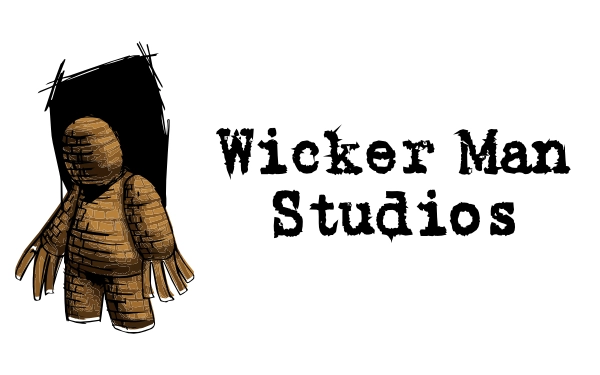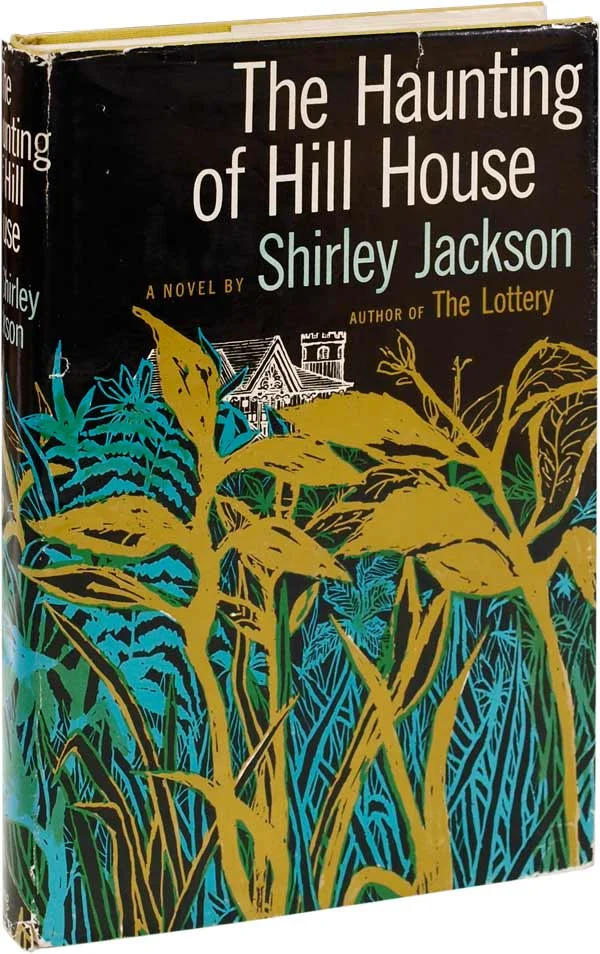by Barb Lien-Cooper
MANY SPOILERS AHEAD (You Have Been Warned)
I’ve read the novel The Haunting of Hill House five times.
The first time, as a teenager, I was frightened by the book, but I also felt conned, not by the author, but by the house itself. When I got to the last page, I said: “Poor Eleanor has been duped by Hill House.”
The second time I read the book, I was scared, but I knew more what to expect. Again, the ending made me think: “Eleanor had to suffer because she and the other supernatural investigators weren’t wanted in Hill House.”
The third time, I wasn’t scared, but I started to make a theory concerning the book. The fourth time, my theory solidified. The fifth time, I was certain I was right.
I’ve read a lot of scholarly articles about the book. Some scholars talk about a theory that says that Hill House is not haunted—that Eleanor is imagining everything. When it’s pointed out that other characters experience the same phenomena, they try to claim that Eleanor, who was subjected to poltergeist phenomena as a teen, must have psychic powers, and is doing everything supernatural herself. Sadly, the scholars that say these things are either not close readers, or have thrown out all the bits of the book that don’t agree with their theory.
When Hollywood was going to turn the book into a movie, the screenwriter went and asked the author, Shirley Jackson, about this very theory, and she said it was interesting, but wrong—that The Haunting of Hill House isn’t that kind of story.
At one point, Dr. Montague, the head supernatural investigator, says that he has spent his whole life looking for a legitimately haunted house. He says that Hill House was “born bad,” that the house itself is sick, diseased. Hill House has a history of fatal accidents that don’t seem to be accidents. Even the townspeople won’t go near the house, with two exceptions. Its reputation for being bad precedes it. Only two caretakers watch over the place, but even they won’t stay there alone… in the dark. Hill House itself is an evil, unlivable place, as well as an actively evil sentient being. Hill House, as a character, is a first-rate supervillain of a character.
Note that I refer to Hill House as a character, as opposed to a setting. I believe that Hill House is as much of a character (or antagonist) as any human in the book. Here’s why I think so—let’s refer to the rightly-praised first paragraph of the novel:
“No live organism can continue for long to exist sanely under conditions of absolute reality; even larks and katydids are supposed, by some, to dream. Hill House, not sane, stood by itself against the hills, holding darkness within; it had stood so for eighty years and might stand for eighty more. Within, walls continued upright, bricks met neatly, floors were firm, and doors were sensibly shut; silence lay steadily against the wood and stone of Hill House, and whatever walked there, walked alone.”
What do we learn here?
First, Hill house is a “live organism.”
Second, Hill House exists under conditions of absolute reality. We don’t understand yet what reality it exists under, but we will learn that as the book progresses.
Third, Hill House does not dream. It has no hope, ambitions, or dreams to console itself in its loneliness.
Fourth, Hill House is obsessive, in that everything must be in its place, as if obediently waiting (we’ll also learn more about that in the later pages, as the housekeeper seems anxious to keep the glasses and linen and silverware right where it belongs whenever possible). But who is the house waiting for?
Fifth, the only being that walks in Hill House “walks” alone. Notice that the paragraph says “what,” not “who.” Ghosts are who, because they are what remains of once-living people. Whatever dwells inside Hill House is a what. There are no ghosts in Hill House. There is only a sentient house that haunts itself.
The plot of Hill House is both simple and complex. Dr. Montague invites three other people to Hill House (Luke, the nephew of the newish owner of Hill House, Theodora the psychic, and Eleanor, who encountered the supernatural as a teenager). One night, Theo and Eleanor encounter horrible noises in the hall, while Dr. Montague and Luke pursue what looks like a dog-like being. The next day, in huge handwriting, the words “Help Eleanor Come Home” are written on the wall. Not that much time after that, Theo’s clothes seem covered in blood of some sort, so she has to wear Eleanor’s clothes. After that, with the exception of a cold spot and Theo and Eleanor seeing something outside that looks (to Eleanor at least) like a picnic (and yet it is very, very frightening to Theodora), the actual externally-scary stuff lessens.
Very little external action happens beyond those incidences until close to the end of the book. But internally, Eleanor– a socially anxious neurotic spinster who had a smother-mother who died– starts going from being neurotic to becoming increasingly unhinged. She starts believing that the house wants her to stay. But why would Hill House wish for that to happen? There is nothing special about Eleanor except that she is the most psychologically-damaged member of the party, and therefore the most easily manipulated by the house.
My theory about what actually happens in Hill House, which I will explain presently, is based on a reference author Shirley Jackson makes to the story “The Canterville Ghost.” (She has Dr. Montague bring it up.) In Oscar Wilde’s story, a ghost tries to haunt a family with the goal of making them leave the house, only to find that the family has no fear of ghosts. The family will not leave. They are unwanted visitors, but they are so civilized and sophisticated that the ghost’s attempts at haunting, such as blood stains on the floor, do nothing to terrify them, let alone make them flee the residence. While “The Canterville Ghost” gives up the ghost in the end, Hill House is made of sterner stuff.
Hill House has the same problem as Wilde’s ghost. Four supernatural investigators become residents of the house, but in spite of Hill House’s best efforts to make them leave, they all but laugh off its attempts. Noises in the hall, cold spots, writing on the wall, cold grips of hands, even blood-stained clothes do not make the investigators flee Hill House. So, unlike Wilde’s ghost, Hill House decides to play dirty, with tragic results.
So why does Hill House not like uninvited visitors? Let’s look at the history of the place. Hill House was built by Hugh Crane with a fixed purpose: the house was meant only to shelter Hugh Crane and his blood relatives (and servants that were tolerated to take care of the house). Two of Crane’s wives, who were not blood relatives, but only related by marriage, died under mysterious circumstances. When Hill House was later inherited by a servant, the servant committed suicide. Hill House has been more or less unoccupied since.
Yet, Hill House waits for something that will never happen. It waits for the blood relatives of Hugh Crane to come and live in the house again. The absolute reality that has driven the live organism of Hill House mad is the knowledge that the Crane family are never coming back. While it waits in vain, it has one idee fixé in its head: “no stranger’s feet will enter me” (to quote Kate Bush’s “Get Out of My House”).
Shirley Jackson said that the key to the novel was the question: Who was holding Eleanor’s hand in the middle of the night?
The answer is: no one. Hill House only made Eleanor think that someone’s icy-cold, firm grip was holding her hand. Hill House can make visitors experience things that aren’t necessarily there. Luke and Dr. Montague chased a dog (or something like a dog) that was only there to separate them from Theo and Eleanor. When Theo and Eleanor are outside, Eleanor sees a picnic, and Theo sees God-knows-what. We only know what Theo sees scares the crud out of Theo. Then toward the end, we find that the bloody clothes have just stopped being bloody, that they were never covered in blood at all. The house can make even reasonable people see things. It could also cloud the mind of poor Eleanor with delusions of being wanted.
So, why drive Eleanor crazy? The house hoped that if the others saw Eleanor’s insanity, they would all leave. Unfortunately, Eleanor’s companions were all so self-centered that they didn’t care about her increasingly-erratic behavior. Frustrated, Hill House tried to make Eleanor commit suicide in the library, hoping they’d all get too scared to stay. Instead, the others tried to send Eleanor away. Hill House upped the ante once more, forcing Eleanor to drive her car into a tree, killing her instantly. Eleanor, at the last moment of her life, her mind briefly free again from the house’s abilities to twist minds, asks, puzzled: “Why am I doing this? Why don’t they stop me?”
In the end, everyone leaves. If we’re hoping that Eleanor stayed on as a ghost, we learn: “Whatever walked there, [still] walked alone.” Eleanor is not there, even in spirit. Eleanor wasn’t wanted in life, nor is she wanted by Hill House in death. Hill House wants only to be left alone, not sane, faced with the absolute reality that no member of the Crane family will ever return.
Yet, still, the glasses and linen and silverware wait, and those doors remain “sensibly shut,” just in case…

